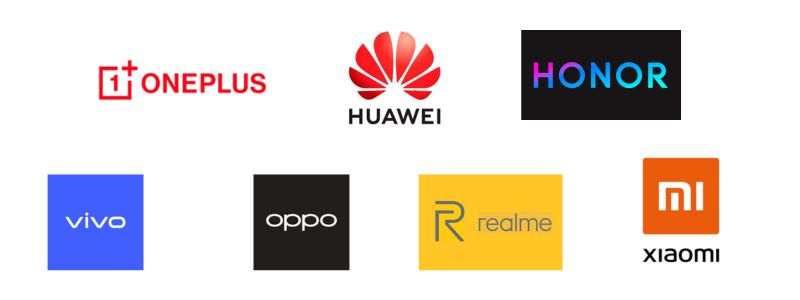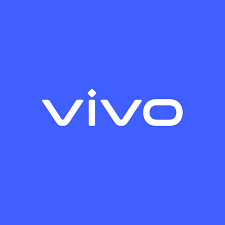
In the intense global competition of the smartphone market, this blog is about China mobile company list. Chinese mobile brands have experienced a remarkable rise.
In the 1990s, the Chinese mobile market was just starting to develop, with domestic brands mainly focused on imitation and OEM production. Companies like Boai and Xiamen gained some market share by copying the appearance and functions of foreign phones. However, due to a lack of core technologies and innovation capabilities, these brands struggled internationally.
Entering the 21st century, some forward-thinking domestic companies began to increase their R&D investments to drive technological innovation. Huawei, for example, launched its first self-developed phone in 2003. While its initial reception was lukewarm, it laid the foundation for future growth. Meanwhile, brands like Xiaomi, OPPO, and Vivo started to carve out their market niches with unique marketing strategies. Xiaomi, for instance, leveraged its community culture and quickly iterated on products based on feedback from its fans (Mi Fans); Huawei established a high-end image with its Mate series and gradually expanded its international presence.
In recent years, as the domestic market became saturated, Chinese mobile companies have aggressively expanded overseas, setting up R&D centers and production bases in Europe, Southeast Asia, and other regions to enhance their global competitiveness. These companies have also partnered with international giants, such as Huawei’s collaboration with Leica and OPPO’s partnership with Hasselblad, which not only boosted their technological prowess but also earned them global recognition in the smartphone industry.
From initial imitators to now being leaders in innovation, Chinese mobile brands have significantly increased their global market share. According to 2024 data, Samsung and Apple each hold an 18% market share, ranking first and second, while Xiaomi ranks third with 14%. OPPO and Vivo each account for 9%, taking the fourth and fifth spots. Xiaomi, OPPO, and Vivo have made significant strides in emerging markets such as Southeast Asia and India, with their international expansion yielding impressive results.
As the list of leading Chinese mobile companies continues to grow, these brands demonstrate that China is no longer just a follower in the mobile phone industry but a major player on the world stage.

Huawei Mobile Company
 Huawei Mobile Company, officially known as Huawei Consumer Business Group, is one of the three core business divisions of Huawei Technologies Co., Ltd.
Huawei Mobile Company, officially known as Huawei Consumer Business Group, is one of the three core business divisions of Huawei Technologies Co., Ltd.
Huawei’s mobile business began in July 2003 with the establishment of the Huawei Mobile Business Department under Huawei Technologies Co., Ltd. Over the years, Huawei has achieved remarkable success in the global smartphone market. In 2013, Huawei ranked third globally in smartphone shipments and led the world in mobile broadband terminal shipments for several consecutive years.
The Huawei Consumer Business Group adheres to a premium strategy, with its smartphone product lines including the Mate series, P series, G series, and Enjoy series. These lines cater to diverse market needs, ranging from high-end flagship models to mid-range and budget-friendly options.
Huawei’s products and services are available in over 170 countries, serving one-third of the global population. The company has established 16 R&D centers in locations such as China, Russia, Germany, Sweden, India, and the United States, leveraging regional strengths to build a global innovation network.
In the smartphone domain, Huawei Mobile Company continues to break new ground with innovations such as the P9/P9 Plus developed in collaboration with Leica, the high-performance Kirin 950 and 960 chips in the Mate series, and advancements in camera technology, display quality, and system optimization.
In 2023, Huawei’s global smartphone market share rose significantly from 8% in 2022 to 12%, with a year-on-year shipment growth of 48%. This substantial increase underscores Huawei Mobile Company’s growing competitive position in the smartphone industry.
In the 2023 Chinese smartphone market rankings, Huawei secured fourth place with a 13.9% market share, becoming the only brand among the top five to achieve positive growth, with an impressive increase of 36.2%.
The Huawei Mate 60 series performed exceptionally well in 2023, particularly in the fourth quarter. Two models from this series ranked among the top 10 in market share growth, with the Huawei Mate 60 Pro taking the top spot. This demonstrates Huawei Mobile Company’s robust competitiveness in the high-end smartphone market.
Vivo Mobile Company
 Vivo, established in 2009, is a leading Vivo mobile company headquartered in Dongguan, China, specializing in smart terminals and intelligent services. Vivo’s business scope is vast, extending beyond the smartphone industry into cutting-edge fields such as 5G communication, artificial intelligence, industrial design, and imaging technology. The Vivo mobile company is actively expanding its market presence worldwide, with products sold in numerous countries and regions. Through continuous innovation and a deep understanding of user needs, the Vivo mobile company consistently launches products and services that meet the diverse demands of its global customer base.
Vivo, established in 2009, is a leading Vivo mobile company headquartered in Dongguan, China, specializing in smart terminals and intelligent services. Vivo’s business scope is vast, extending beyond the smartphone industry into cutting-edge fields such as 5G communication, artificial intelligence, industrial design, and imaging technology. The Vivo mobile company is actively expanding its market presence worldwide, with products sold in numerous countries and regions. Through continuous innovation and a deep understanding of user needs, the Vivo mobile company consistently launches products and services that meet the diverse demands of its global customer base.
Highlights of Vivo’s Mobile Business:
Diverse Product Line: As a prominent Vivo mobile company, Vivo offers a wide array of smartphones under well-known brands such as Vivo, iQOO, and NEX. These cover everything from entry-level models to high-end flagship devices. This diversified product strategy allows the Vivo mobile company to cater to a broad consumer base, from budget-conscious users to those seeking cutting-edge technology.
Global Market Expansion: The Vivo mobile company has firmly established itself in the global smartphone market, with its products available in multiple countries and regions. This highlights the company’s competitive strength and growing brand influence on the international stage.
Continuous Innovation: The Vivo mobile company places great emphasis on technological innovation, investing significantly in research and development across key smartphone technologies such as 5G communication, artificial intelligence, and imaging technology to ensure its products remain competitive.
Precise Understanding of User Needs: The Vivo mobile company rapidly adapts to market changes by closely monitoring market trends and understanding consumer preferences. This ability enables the company to swiftly introduce new products that align with customer expectations.
Leading Imaging Technology: The Vivo mobile company continually refines its imaging technology through collaboration with professional imaging teams. It has introduced groundbreaking imaging features such as micro-gimbal stabilization technology, providing users with an exceptional photography experience.
Through these key strengths, the Vivo mobile company has cemented its position in the global smartphone market, driving innovation and delivering exceptional products that meet the evolving needs of users worldwide.
Oppo Mobile Company

OPPO, established in 2004 and headquartered in Dongguan, China, is a globally influential OPPO mobile company and a leading manufacturer of smartphones and smart devices. Its business scope spans smartphones, smart devices, IoT products, and mobile internet services. Guided by its brand philosophy of youthfulness, fashion, and innovation, OPPO is dedicated to delivering high-quality products and services to consumers worldwide. With robust R&D capabilities and keen insights into market trends, the OPPO mobile company has built an extensive global sales network and a loyal user base, with its products sold in numerous countries and regions. OPPO’s continuous investment in technological innovation, particularly in photography and fast-charging technologies, has driven industry progress and established it as a key player in the global smartphone market.
Highlights of OPPO’s Mobile Business
1. Trendsetting Stylish Design:
The OPPO mobile company leads in smartphone design, attracting consumers with stylish aesthetics and innovative elements such as unique materials, gradient colors, and ultra-thin bodies. The OPPO Reno series exemplifies this, featuring a lightweight design with crystal diamond craftsmanship, creating a dazzling visual effect on the phone’s back. Offering a range of fresh and vibrant colors, OPPO caters to personalized preferences, making it a favorite among fashion enthusiasts.
2. Exceptional Photography Capabilities:
OPPO is renowned for its cutting-edge photography technology, heavily investing in R&D to deliver an outstanding imaging experience. Equipped with high-resolution cameras, advanced sensors, and optimized algorithms, OPPO smartphones, such as the Find X series, excel in night photography, portrait shots, and telephoto capabilities. Users can capture vibrant, high-quality photos rich in detail. Additionally, the OPPO mobile company enhances user convenience with its SuperVOOC fast-charging technology, ensuring efficient power replenishment.
3. Innovative Fast-Charging Technology:
OPPO’s VOOC Flash Charge technology is an industry leader, enabling fast and safe charging. For instance, the OPPO Reno7 series supports 65W SuperVOOC, allowing significant power replenishment in a short time. This ensures users can quickly recharge their devices in emergencies, reducing downtime and improving overall smartphone efficiency.
By integrating stylish design, advanced imaging, and industry-leading fast-charging technologies, the OPPO mobile company continues to solidify its position as a global leader in the smartphone market, meeting diverse consumer needs and driving technological advancements.
Xiaomi Phone Company
 Xiaomi, established in 2010 and headquartered in Beijing, China, is a global enterprise specializing in innovative technology products. The company’s diverse business portfolio includes smartphones, smart hardware, electronic devices, chip development, smart electric vehicles, telecommunications, financial services, internet TVs, and smart home ecosystems. Driven by technological innovation, Xiaomi focuses on optimizing products and services to deliver high-quality, cost-effective solutions. With an extensive global market presence spanning over 100 countries and regions, Xiaomi has built a massive user base. Its unique business model and pioneering spirit have propelled it to prominence in the global tech industry, solidifying its mission to enable everyone worldwide to enjoy the benefits of technology.
Xiaomi, established in 2010 and headquartered in Beijing, China, is a global enterprise specializing in innovative technology products. The company’s diverse business portfolio includes smartphones, smart hardware, electronic devices, chip development, smart electric vehicles, telecommunications, financial services, internet TVs, and smart home ecosystems. Driven by technological innovation, Xiaomi focuses on optimizing products and services to deliver high-quality, cost-effective solutions. With an extensive global market presence spanning over 100 countries and regions, Xiaomi has built a massive user base. Its unique business model and pioneering spirit have propelled it to prominence in the global tech industry, solidifying its mission to enable everyone worldwide to enjoy the benefits of technology.
Highlights of Xiaomi’s Smartphone Business
1. High Cost-Performance Strategy for Broad Accessibility:
Xiaomi is committed to offering cost-effective smartphones that cater to a wide audience. By optimizing supply chain management and reducing operational costs, the Xiaomi phone company ensures high-quality products at affordable prices. The Xiaomi Redmi series is particularly popular, delivering excellent performance at budget-friendly prices, making it a preferred choice for cost-conscious users. Simultaneously, Xiaomi targets the premium market with its Xiaomi Digital series, continually enhancing quality and performance to meet the needs of various consumer segments.
2. Comprehensive Internet Ecosystem for a Smart Life:
The Xiaomi phone company has built a robust internet ecosystem, enabling seamless connectivity between smartphones and other smart devices. Users can control Xiaomi smart bands, speakers, and home appliances directly from their smartphones, creating a convenient smart living experience. For instance, Xiaomi phones allow remote control of smart lights, air conditioners, and cameras, helping users personalize their smart home setups and enhance comfort and efficiency.
3. Continuous Technological Innovation for Product Upgrades:
Xiaomi invests heavily in smartphone technology research and development, achieving numerous breakthroughs. The Xiaomi phone company was among the first to introduce high-refresh-rate screens, delivering smoother visuals and enhanced user experiences. In fast-charging technology, Xiaomi leads with advancements like 120W fast charging in select models, enabling rapid power replenishment. Additionally, Xiaomi consistently improves its imaging technology, providing users with superior photography capabilities.
By combining affordability, an integrated smart ecosystem, and cutting-edge innovations, the Xiaomi phone company continues to strengthen its position as a leader in the global smartphone market, delivering exceptional value and enhancing the technology experience for users worldwide.
Honor Phone Company
 Honor Mobile was founded on December 16, 2013, and from its inception, it launched two highly promising models, the Honor 3C and Honor 3X. The company innovatively introduced the C2B (Customer-to-Business) internet model, deeply focusing on user needs, and through close interaction with users and precise feedback, it carefully crafted product designs and optimized performance across the board. Following this, during the critical development phase from 2014 to 2016, Honor Mobile rapidly advanced, continuously innovating and bringing surprises to the market. Among these, the Honor 6 made a stunning debut as the world’s first smartphone equipped with an 8-core 4G Cat6 technology, marking the beginning of a new era for smartphone technology. Additionally, in October 2014, Honor made a significant step towards internationalization, with a grand launch in Germany. The Honor 6 was simultaneously released in 14 countries, including Germany and France, making Honor the first Chinese mobile brand to use the C2B internet model on a large scale for expansion overseas.
Honor Mobile was founded on December 16, 2013, and from its inception, it launched two highly promising models, the Honor 3C and Honor 3X. The company innovatively introduced the C2B (Customer-to-Business) internet model, deeply focusing on user needs, and through close interaction with users and precise feedback, it carefully crafted product designs and optimized performance across the board. Following this, during the critical development phase from 2014 to 2016, Honor Mobile rapidly advanced, continuously innovating and bringing surprises to the market. Among these, the Honor 6 made a stunning debut as the world’s first smartphone equipped with an 8-core 4G Cat6 technology, marking the beginning of a new era for smartphone technology. Additionally, in October 2014, Honor made a significant step towards internationalization, with a grand launch in Germany. The Honor 6 was simultaneously released in 14 countries, including Germany and France, making Honor the first Chinese mobile brand to use the C2B internet model on a large scale for expansion overseas.
In 2020, Honor underwent a major transformation, officially becoming an independent company separate from Huawei. Despite facing challenges, with market share dropping to 3% in the first quarter of 2021, Honor quickly adjusted its strategy, leveraging years of accumulated research and development strength, a solid user base, and outstanding marketing capabilities. By the second quarter, its market share rebounded strongly to 8.9%, allowing it to break into the top five of the domestic smartphone market. In the fourth quarter, Honor surged ahead to become the second-largest player in the domestic market. In January 2022, Honor once again showcased its innovative strength by releasing its first foldable flagship, the Magic V, attracting significant attention in the industry. By 2023, Honor continued its successful momentum, constantly expanding its product lineup with new models in the Digital series, Magic series, X series, and more, precisely meeting the diverse needs of different consumer groups. Ultimately, in the third quarter of 2023, Honor triumphed over its competitors, winning both the total shipment volume and market share in the Chinese smartphone market, writing a glorious chapter of success.
Realme Mobile Company
 Founded in 2018 and headquartered in Shenzhen, China, realme is a technology company focused on providing high-quality smartphones for young consumers. Despite being a relatively young company, realme quickly emerged in the global smartphone market due to its precise market positioning and outstanding product strategy. The company primarily targets young users, gaining in-depth insights into the consumption needs and preferences of the younger generation. It seamlessly blends performance with trendy designs, aiming to create smartphones that offer both high performance and a stylish appearance for young consumers. With its business expanding steadily, realme’s products are now available in multiple countries and regions worldwide. By adopting a combination of online and offline sales models, the company is actively increasing its market share, becoming a dynamic and promising emerging force in the smartphone industry.
Founded in 2018 and headquartered in Shenzhen, China, realme is a technology company focused on providing high-quality smartphones for young consumers. Despite being a relatively young company, realme quickly emerged in the global smartphone market due to its precise market positioning and outstanding product strategy. The company primarily targets young users, gaining in-depth insights into the consumption needs and preferences of the younger generation. It seamlessly blends performance with trendy designs, aiming to create smartphones that offer both high performance and a stylish appearance for young consumers. With its business expanding steadily, realme’s products are now available in multiple countries and regions worldwide. By adopting a combination of online and offline sales models, the company is actively increasing its market share, becoming a dynamic and promising emerging force in the smartphone industry.
Oneplus Mobile Company
 OnePlus mobile company was founded in 2013 and headquartered in Shenzhen, China, is a high-tech company that integrates product research and development, manufacturing, after-sales services, and sales. With its brand philosophy of “Never Settle,” OnePlus mobile company focuses on providing users with high-quality, personalized smartphones. The company’s design ethos emphasizes minimalist and refined aesthetics while prioritizing user experience. OnePlus smartphones are built with premium materials and crafted with exceptional attention to detail.
OnePlus mobile company was founded in 2013 and headquartered in Shenzhen, China, is a high-tech company that integrates product research and development, manufacturing, after-sales services, and sales. With its brand philosophy of “Never Settle,” OnePlus mobile company focuses on providing users with high-quality, personalized smartphones. The company’s design ethos emphasizes minimalist and refined aesthetics while prioritizing user experience. OnePlus smartphones are built with premium materials and crafted with exceptional attention to detail.
The OnePlus mobile company has actively expanded its global presence, with its sales network covering key regions such as the United States, Europe, and India. Through strategic collaborations with local carriers and retailers, OnePlus has successfully increased brand recognition and its influence in international markets. Committed to continuous technological innovation, OnePlus continually optimizes its product performance to meet the needs of high-end smartphone users. Over the years, OnePlus has built a strong and reliable brand image within the global smartphone industry.
Smartphone Business Highlights:
Minimalist and Refined Design Reflects Premium Quality:
OnePlus smartphones are recognized for their simple, yet sophisticated designs. The OnePlus mobile company uses premium materials and expert craftsmanship to create lightweight devices that offer an ergonomic and comfortable feel. A standout example is the OnePlus 10 Pro, which features smooth, flowing lines with a unique glass back material, finely polished to provide a luxurious tactile experience. The attention to detail extends to optimized button feedback and thoughtfully designed ports, all aimed at enhancing the user experience.
Outstanding Performance and System Optimization for Enhanced Efficiency:
In terms of performance, OnePlus smartphones are equipped with powerful processors, large-capacity RAM, and high-speed storage to ensure smooth multitasking, app usage, and gaming performance. Furthermore, the OnePlus mobile company has extensively optimized its proprietary Hydrogen OS, a customized Android-based operating system, to focus on simplicity, fluidity, and responsiveness. The system reduces unnecessary bloatware and provides fast system responsiveness. Smooth animation transitions and seamless interactions contribute to an enhanced user experience. OnePlus also regularly updates its system, ensuring that users always have access to the latest features and security patches.
International Strategy to Expand Global Market Reach:
The OnePlus mobile company has made significant strides in expanding its international presence, achieving a solid market share in regions such as Europe, North America, and India. By forming partnerships with local carriers and retailers, OnePlus has established a wide-reaching and effective sales network. The OnePlus mobile company also focuses on product localization, tailoring features and services to meet the specific needs and preferences of users in different regions. For example, in Europe and North America, OnePlus emphasizes compatibility with local network standards and privacy protection requirements. In India, the company optimizes product features such as camera performance and battery life to cater to local demands, further enhancing its competitive edge in these regions.
(1) Exceptional Achievements in 5G Technology
Chinese mobile brands have made remarkable strides in 5G technology. As early as 2019, Huawei introduced the world’s first 5G SoC chip, the Kirin 990, which powered its Mate 30 series. Xiaomi has also excelled in this domain, ranking third globally in essential 5G patents according to a 2024 report by the China Academy of Information and Communications Technology. These brands’ 5G phones offer ultra-fast data transmission and minimal latency, excelling in scenarios such as real-time gaming and high-definition video conferencing. They deliver faster and more stable network experiences to users.
(2) Breakthroughs in Chip Development
Chip innovation is a critical area of advancement for Chinese mobile brands. Huawei’s Kirin chips have continually evolved, with the Kirin 9000, manufactured using a 5nm process, integrating powerful CPU, GPU, and NPU cores. Despite external challenges, Huawei has persisted in R&D, with its latest Kirin chips achieving significant performance improvements, rivaling Snapdragon 8 Gen 4. MediaTek’s Dimensity series also stands out, with the Dimensity 9000 featuring Armv9 architecture and a 4nm process for exceptional performance and energy efficiency. The Dimensity 9400 further enhances GPU and ray-tracing capabilities, providing robust computational support for smartphones.
(3) Innovations in Imaging Technology
Chinese brands are redefining imaging technology. OPPO, in collaboration with Hasselblad, has equipped its Find X7 series with a groundbreaking Ultra Light and Shadow Imaging System. This system integrates an all-main-camera setup, advanced image processing engines, and ProXDR display technology, capturing realistic light and shadow details for layered, vivid photos. Vivo’s partnership with Zeiss has improved optical performance and image quality, while Xiaomi’s collaboration with Leica leverages AI imaging technology. Through deep learning algorithms, Xiaomi’s latest 5G models optimize photo effects across various scenarios, ensuring high-quality images every time.
(1) Unique Innovations in Exterior Design
In full-screen design, vivo’s NEX pioneered a zero-boundary full screen with a pop-up camera, achieving a screen-to-body ratio of 91.24%, offering an immersive visual experience. OPPO’s Find X introduced a dual-track periscope structure that hides the front camera and sensors within the body, ensuring a seamless screen design while incorporating 3D facial recognition for payments and selfies.
Huawei leads in foldable screens with innovations like the Huawei P50 Pocket, which features a stylish fusion of leather and glass materials. Its Mate X series continues to push folding technology forward with advancements like the double-rotation waterdrop hinge, enhancing screen flatness and durability. Meizu’s Pro 7 stands out with a secondary screen on the back, adding functionality and fun, while Smartisan’s Pro 2 integrates the fingerprint module into its logo, achieving simplicity and elegance.
(2) Precision in Materials and Craftsmanship
Chinese brands emphasize material innovation. The Huawei P40 Pro+ features a rear cover made of nano-microcrystalline ceramic, fired at 1500°C and polished to achieve a jade-like texture that is durable and scratch-resistant. Xiaomi’s MIX series uses ceramic materials and innovative acoustic transmission for a sleek and premium feel.
In terms of craftsmanship, OPPO’s Reno series blends glossy and matte glass with gradient colors for a visually and tactilely appealing finish, resistant to fingerprints. Vivo’s S18 series employs advanced glass processing techniques, with its “Flower Brocade” colorway featuring intricate patterns resembling Chinese embroidery, adding layers and elegance to its appearance.
(1) Personalized Operating Systems
Chinese brands excel in operating system customization. Huawei’s HarmonyOS enables seamless connectivity and resource sharing across devices. For instance, users can effortlessly transfer files and perform cross-screen operations between Huawei Mate smartphones and tablets, enhancing productivity and entertainment. Xiaomi’s MIUI focuses on integrating smart living, with its refined visual design, smooth animations, and enhanced multitasking efficiency. MIUI 15 further strengthens support for smart home devices, allowing users to control lights, appliances, and security systems, creating a personalized smart living space.
(2) Extensive AI Integration
AI technology is deeply embedded in Chinese smartphones. Huawei’s voice assistant excels in intelligent object recognition, providing instant information about plants and objects. It also supports dual-language translation, making communication with foreign friends seamless. Xiaomi’s Xiao Ai and OPPO’s Breeno voice assistants handle complex commands, allowing users to make calls, send messages, or play music through simple voice prompts.
AI-powered photography is another highlight. OPPO’s AI scene recognition detects over 120 scenarios, from landscapes to portraits, automatically optimizing settings for stunning results. Vivo’s AI scene recognition, developed in collaboration with Zeiss, adjusts effects for vibrant colors and natural lighting, even offering manual controls for creative users.
Global Vision: Expanding Markets and Gaining International Recognition
Chinese mobile brands are gaining increasing recognition worldwide, earning consumer trust across diverse markets.
In Europe, a highly competitive region, Chinese brands exhibit strong performance. According to Counterpoint data, Xiaomi held a 20% market share in Europe in Q2 2024, ranking third, followed by OPPO at 13%. Honor has also made significant gains, with a market share exceeding 15% in Spain. Despite challenges, Huawei remains a staple in high-end markets like Germany and France, where its P and Mate series are highly regarded by premium users.
Asia remains a crucial battleground. In India, Chinese brands dominate, with Xiaomi leading at 28% market share, followed by Vivo (19%) and OPPO (17%). Realme also holds 12%, offering high-value products tailored to local needs. In Southeast Asia, brands like OPPO and Vivo account for over 40% of the Indonesian market, leveraging diverse product lines, stylish designs, and localized marketing strategies.
In Africa, Chinese brands have unlocked a “blue ocean” of opportunities. Transsion Holdings, with its TECNO and Infinix brands, commands over 50% of the market. These brands address unique consumer needs, such as multi-SIM functionality, long battery life, and camera optimizations for darker skin tones, winning trust through localized innovation.
Chinese mobile brands are undoubtedly shaping the future of the global smartphone industry, driven by technological innovation, aesthetic excellence, and an unwavering commitment to meeting diverse consumer needs.
